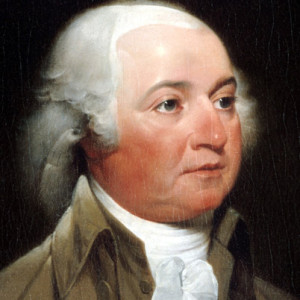John Adams was also a strong advocate for proportional representation.
- January, 1766: Long before the Declaration of Independence, Adams wrote, “All men are born equal.”
- April, 1776: In his Thoughts on Government, Adams wrote, “The principal difficulty lies, and the greatest care should be employed in constituting this Representative Assembly. It should be in miniature, an exact portrait of the people at large. It should think, feel, reason, and act like them. That it may be the interest of this Assembly to do strict justice at all times, it should be an equal representation, or in other words equal interest among the people should have equal interest in it.”
- August 1, 1776: Along with Benjamin Franklin and James Wilson, Adams opposed equal state suffrage in the design of the Articles of Confederation. According to the minutes, “John Adams advocated the voting in proportion to numbers. he said that we stand here as the representatives of the people. that in some states the people are many, in others they are few; that therefore their vote here should be proportioned to the numbers from whom it comes…therefore the interests within doors should be the mathematical representatives of the interests without doors. that the individuality of the colonies is a mere sound. does the individuality of a colony increase it’s wealth or numbers? if it does, pay equally.”
- August 25, 1776: Adams elaborated on his opposition to equal state suffrage in a letter. “Equality of Representation in the Legislature, is a first Principle of Liberty, and the Moment, the least departure from such Equality takes Place, that Moment an Inroad is made upon Liberty. Yet this essential Principle is disregarded, in many Places, in several of these Republicks. Every County is to have an equal Voice altho some Counties are six times more numerous, and twelve times more wealthy. The Same Iniquity will be established in Congress. R.I. will have an equal Weight with the Mass. The Delaware Government with Pensilvania and Georgia with Virginia. Thus We are sowing the Seeds of Ignorance Corruption, and Injustice, in the fairest Field of Liberty, that ever appeared upon Earth, even in the first Attempts to cultivate it.”
- February 12, 1777: In another letter, Adams expressed his frustration at failing to pass a motion in the Continental Congress: “…after two days debate, the Question was lost by an equal Division of the States present, five against five. New Hampshire Massachusetts Bay, New Jersey, Pensilvania and Virginia on one side, and Rhode Island Connecticutt, North Carolina, South Carolina and Georgia, on the other. Here was an Example of the Inconvenience and Injustice of voting by States. Nine Gentlemen, representing about Eight hundred thousand People, against Eighteen Gentlemen representing, a Million and an Half nearly, determined this Point.”
- 1780: Adams wrote the Massachusetts Constitution, which provided for a Senate with representation proportional to taxes paid by district and a House with representation proportional to number of taxpaying citizens.
- 1787: Adams was the ambassador to Great Britain during the Constitutional Convention. He wrote Defence of the Constitutions of Government of the United States that year. “The end to be aimed at, in the formation of a representative assembly, seems to be the sense of the people, the public voice. The perfection of the portrait consists in its likeness. Numbers, or property, or both, should be the rule; and the proportions of electors and members an affair of calculation.”
- December 6, 1787: Adams and Jefferson (then ambassador to France) corresponded on the proposed, not yet ratified constitution in late 1787. Adams wrote, “We agree perfectly that the many should have a full, fair, and perfect representation. You are apprehensive of monarchy, I, of aristocracy. I would, therefore, have given more power to the president, and less to the senate.”
The final vote on the Great Compromise took place on July 16, 1787. By a vote of five to four, the state delegations voted for equal state suffrage in the Senate. The Massachusetts delegation was divided 2-2 and thus unable to vote. Massachusetts was a large state, and their vote against equal state suffrage should have been easy, but that is another story, probably related to Shays’ Rebellion. Perhaps, if John Adams had been able to attend the Convention, the representational design of the Senate would be different.
